| Product Name | Urine Creatinine Detection Kit |
| Description |
Quantitative colorimetric detection of creatinine in urine samples |
| Species Reactivity | Dog, Human, Monkey, Rat |
| Platform | Microplate |
| Sample Types | Urine |
| Detection Method | Colorimetric Assay |
| Assay Type | Direct Quantitative Assay |
| Utility | Detection kit used to quantitatively measure creatinine in samples. |
| Sensitivity | 0.032 mg/dL |
| Assay Range | 0.3125- 20 mg/dl |
| Precision | Intra Assay Precision: Three human urine samples were diluted 1:20 with deionized water and run in replicates of 20 in an assay. The mean and precision of the calculated creatinine concentrations were: Sample 1- 1174.3 pg/mL, 6% CV Sample 2- 475.9 pg/mL, 5.6% CV Sample 3- 177.4 pg/mL, 14.7% CV Inter Assay Precision: Three human urine samples were diluted 1:20 with deionized water and run in duplicates in 20 assays run over five days by three operators. The mean and precision of the calculated creatinine concentrations were: Sample 1- 1188.1 pg/mL, 7.2% CV Sample 2- 508.7 pg/mL, 6.3% CV Sample 3- 199.7 pg/mL, 10.9% CV |
| Number of Samples | 88 samples in duplicate |
| Other Resources | Kit Booklet , Kit Booklet Lot No SC188030 , MSDS , MSDS Lot No. SC188030 |
| Field of Use | Not for use in humans. Not for use in diagnostics or therapeutics. For in vitro research use only. |
Properties
| Storage Temperature | 4ºC | |||||||||||||||
| Shipping Temperature | Blue Ice | |||||||||||||||
| Product Type | Detection Kits | |||||||||||||||
| Assay Overview | The Urine Creatinine Detection kit is designed to quantitatively measure creatinine present in urine samples. A creatinine standard, calibrated to a NIST creatinine standard, is provided to generate a standard curve for the assay and all samples should be read off the standard curve. Standards or diluted samples are pipetted into a clear microtiter plate. The color generating reaction is initiated with the StressXpress® Creatinine Reagent, which is pipetted into each well. After a short incubation the intensity of the generated color is detected in a microtiter plate reader capable of measuring 490nm wavelength. The concentration of the creatine in the sample is calculated, after making a suitable correction for the dilution of the sample, using software available with most plate readers. The Jaffe reaction used in this kit has been modified to read creatinine levels in urine(7,8). | |||||||||||||||
| Kit Overview |
|
|||||||||||||||
| Cite This Product | Urine Creatinine Detection Kit (StressMarq Biosciences Inc., Victoria BC CANADA, Catalog # SKT-200) |
Biological Description
| Alternative Names | N-Carbamimidoyl-N-methylglycine Detection Kit, Methylguanidoacetic acid Detection Kit |
| Research Areas | Cardiovascular System, Cell Signaling |
| Scientific Background | Creatinine (2-amino-1-methyl-5H-imadazol-4-one) is a metabolite of phosphocreatine (p-creatine), a molecule used as a store for high-energy phosphate that can be utilized by tissues for the production of ATP (1). Creatine either comes from the diet or synthesized from the amino acids arginine, glycine, and methionine. This occurs in the kidneys and liver, although other organ systems may be involved and species-specific differences may exist (2). Creatine and p-creatine are converted non-enzymatically to the metabolite creatinine, which diffuses into the blood and is excreted by the kidneys. In vivo, this conversion appears to be irreversible and in vitro it is favored by higher temperatures and lower pH2. Creatinine forms spontaneously from p-creatine (3). Under normal conditions, its formation occurs at a rate that is relatively constant and as intra-individual variation is <15% from day to day, creatinine is a useful tool for normalizing the levels of other molecules found in urine. Additionally altered creatinine levels may be associated with other conditions that result in decreased renal blood flow such as diabetes and cardiovascular disease (4-6). |
| References |
1. Wallimann, T. et al., Biochem. J., 2000, 281, 21-40. 2. Wyss, M. and Kaddurah-Daouk, R., Physiol. Rev., 2000, 80, 1107-1213. 3. Raja Iyengar, M. et al., J. Biol. Chem, 1985, 260, 7562-7567. 4. Manjunath, G. et al., Postgrad. Med. 2001, 110, 55-62. 5. Gross, J.L. et al., Diabetes Care, 2005, 28, 164-176. 6. Anavekar, N.S. et al., New Engl. J. Med., 2004, 351, 1285-1295. |
Product Images
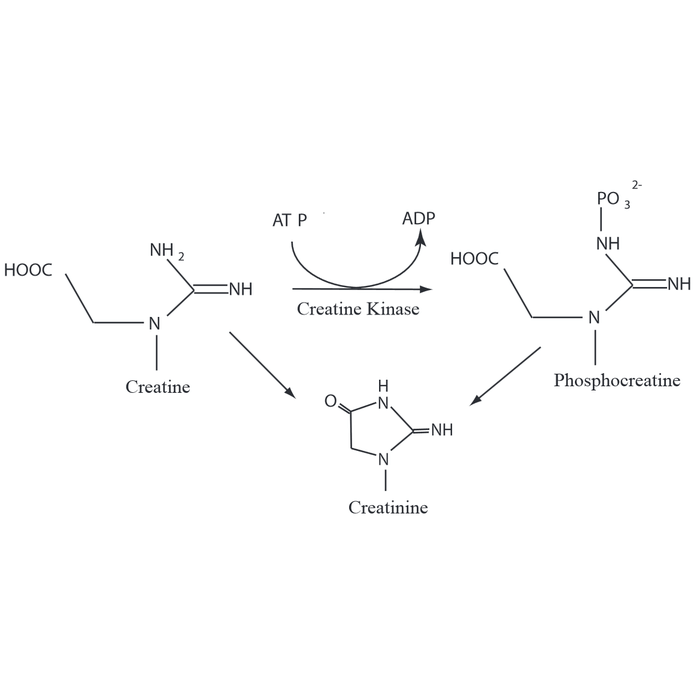
Conversion of creatine and p-creatine to creatinine. Creatine and p-creatine are converted non-enzymatically to the metabolite creatinine, which diffuses into the blood and is excreted by the kidneys. In vivo, this conversion appears to be irreversible and in vitro it is favored by higher temperatures and lower pH. Creatinine forms spontaneously from p-creatine.

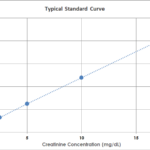
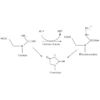
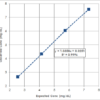
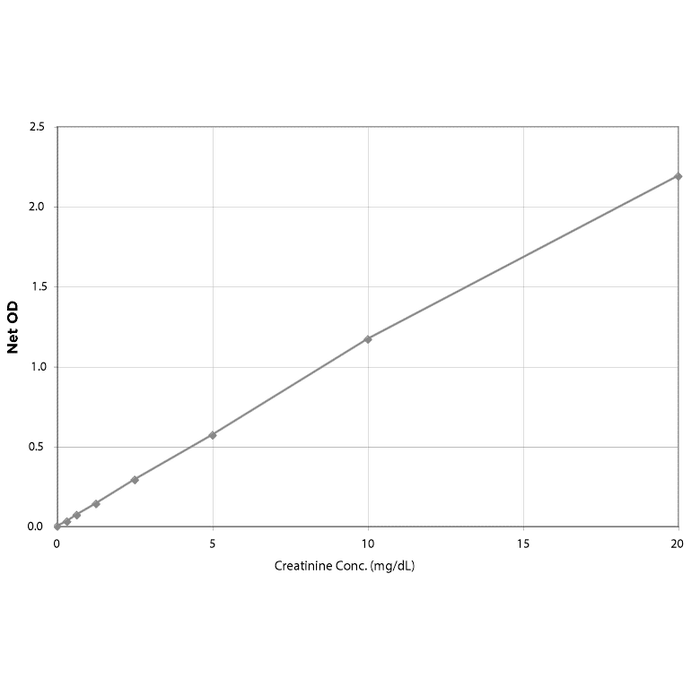
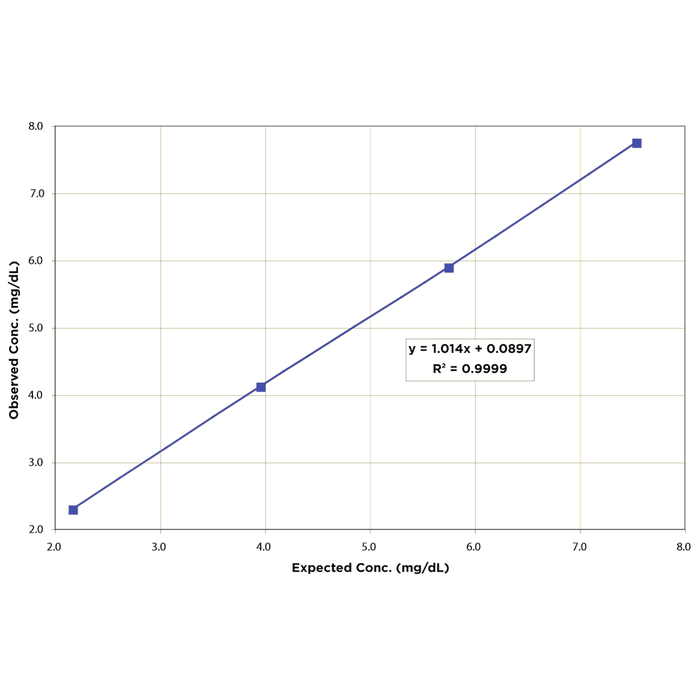
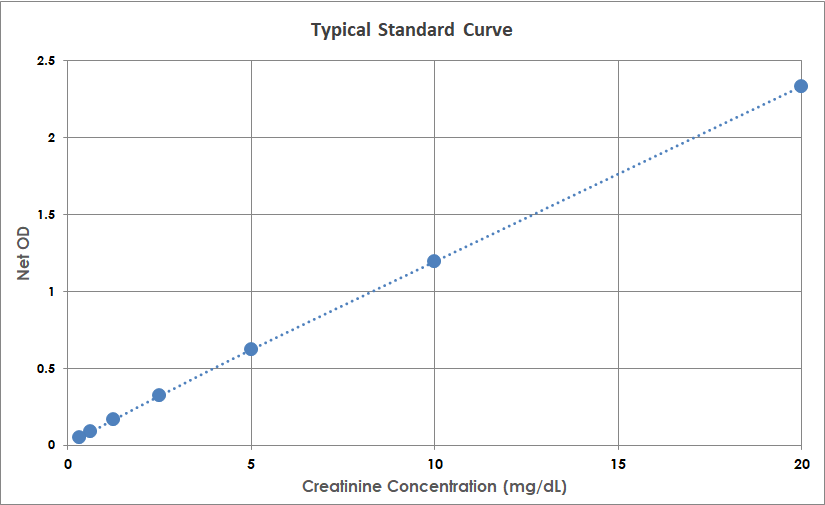
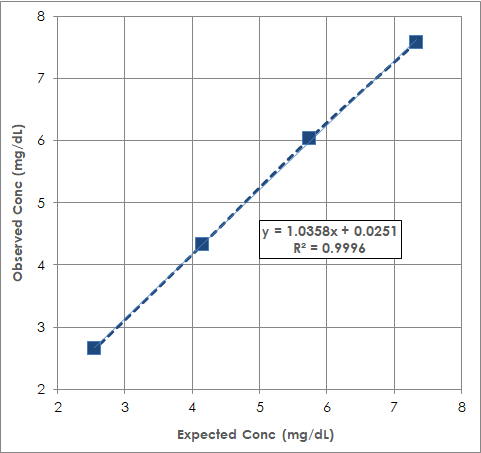
Reviews
There are no reviews yet.